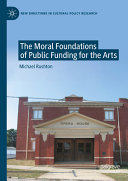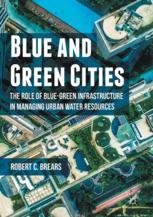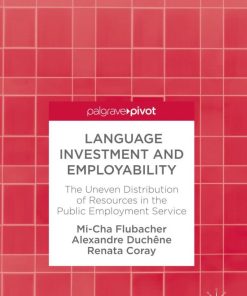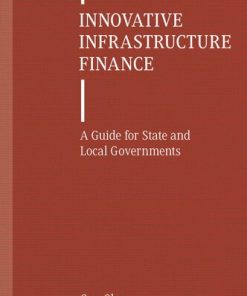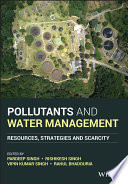Innovative Funding and Financing for Infrastructure Addressing Scarcity of Public Resources 1st edition by Jeff Delmon 1009340168 9781009340168
$50.00 Original price was: $50.00.$25.00Current price is: $25.00.
Innovative Funding and Financing for Infrastructure: Addressing Scarcity of Public Resources 1st edition by Jeff Delmon – Ebook PDF Instant Download/DeliveryISBN: 1009340168, 9781009340168
Full download Innovative Funding and Financing for Infrastructure: Addressing Scarcity of Public Resources 1st edition after payment.
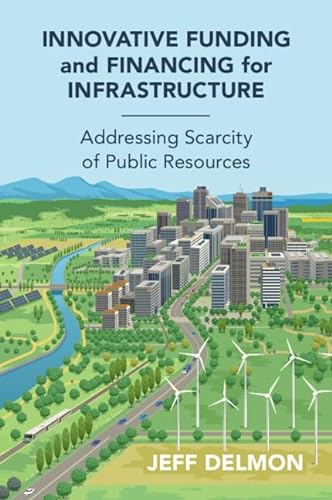
Product details:
ISBN-10 : 1009340168
ISBN-13 : 9781009340168
Author: Jeff Delmon
Investment in infrastructure is critical to economic growth, quality of life, poverty reduction, access to education, good quality healthcare–i.e, a dynamic economy. Yet amid scarce public capital, heavily indebted governments and increased demands on government resources, infrastructure projects often suffer from investment shortfalls and inadequate maintenance. These challenges merit renewed efforts at finding additional sources of funding. Innovative Funding and Financing for Infrastructure focuses on innovative approaches to financing as well as debt and equity from new sources and structures. It provides critical methods to increase the capital available for infrastructure, reduce fiscal liabilities and improve leverage of scarce public resources. Designed for students and specialists in the fields of investment planning and finance, this book offers a survey of creative approaches from around the world, resulting in a practical guidance for policy makers and strategists on how governments can enable and encourage innovative funding and financing.
Innovative Funding and Financing for Infrastructure: Addressing Scarcity of Public Resources 1st Table of contents:
1 Introduction and Summary
1.1 Innovative Sources of Funding
1.2 Innovative Sources of Finance
Part I Funding
2 Land Value Capture
2.1 LVC Instruments
2.1.1 Land for Cash
2.1.2 Land as Public Contribution
2.1.3 Land as Collateral
2.1.4 Developer Exactions and Impact Fees
2.1.5 Land Pooling/Readjustment
2.1.6 Betterment Levies/Special Assessments
2.1.7 Density Bonus
2.1.8 Upzoning
2.1.9 Transferable Development Right
2.1.10 Joint Ventures
2.2 Bringing Forward LVC Funding
2.3 Lessons Learned
2.3.1 Consultation with Property Owners, Developers, and Other Stakeholders
2.3.2 Setting Appropriate Charges on Owners/Developers
2.3.3 Consultation with Community
2.3.4 Administrative Capacity
2.3.5 Legal Framework
2.3.6 Land Controls, Cadaster or Land Registry, Technology, and Data Systems
2.3.7 Dynamic Real Estate Market
2.3.8 Transparent Land Sales
2.3.9 Readiness of Financial and Capital Markets
2.3.10 Fiscal Mandates and Powers of Enforcement
2.3.11 Need for Accurate and Complete Data
2.3.12 Risk of Overreliance
2.3.13 Managing Corruption and Perceptions Thereof
2.3.14 Avoiding Excessive Gentrification
3 Commercial Value Capture
3.1 Introduction to CVC
3.2 Implementing CVC Systematically
3.3 CVC in Different Sectors
3.3.1 Transport
3.3.2 Power
3.3.3 Water and Wastewater
3.3.4 Solid Waste Management
3.3.5 Urban Redevelopment
3.3.6 Government Offices
3.3.7 Public/Low-Cost Housing
3.3.8 Historic and Cultural Sites
3.3.9 Hospitality and Tourism
3.3.10 Health
3.3.11 Education
3.4 A CVC Menu
3.4.1 Advertising and Marketing
3.4.2 Naming Rights
3.4.3 Residential Space
3.4.4 Government Office Space
3.4.5 Retail Space
3.4.6 Parking
3.4.7 Hospitality and Tourism
3.4.8 Vehicle, Logistics, and Other Sector Services
3.4.9 Development Rights
3.4.10 Infrastructure Sharing
3.4.11 Cost Reductions
3.4.12 Additional Offtake from the Facility
3.4.13 Beneficiary Contributions, Prepurchase of Services, and Congestion Pricing
3.5 Emissions Reduction Credits/Offsets
3.6 Lessons Learned in Implementing Innovative Funding
3.6.1 Think Outside the Box
3.6.2 Don’t Try to Be Too Clever
3.6.3 Community Engagement
3.6.4 Maintain Focus on Service Delivery
4 Programmatic Value Capture
4.1 TOD Principles
4.2 Challenges When Delivering TOD and Best Practices
Part II Financing
5 Principles of Finance
5.1 Sources of Financing
5.1.1 Equity Contributions
5.1.2 Debt Contributions
5.1.2.1 Bonds
5.1.2.2 Credit Enhancement
5.1.3 Mezzanine/Subordinated Contributions
5.1.4 Securitization and Syndication
5.1.5 Value for Money
5.2 Financiers
5.2.1 Local Commercial Banks
5.2.2 Global Commercial Banks
5.2.3 Development Financial Institutions
5.2.4 Institutional and Retail Investors
5.2.5 Debt Capital Markets
5.2.5.1 Global Capital Markets
5.2.5.2 Domestic Capital Markets
5.2.6 Equity Investors
5.3 Key Risks
5.3.1 Completion
5.3.2 Force Majeure and Change in Law
5.3.3 Political Risk
5.3.4 Environmental and Social Risk
5.3.5 Currency Exchange Risk
5.3.6 Interest Rate Risk
5.4 Key Investor Concerns
5.4.1 Importance of Project
5.4.2 Project “Champion”?
5.4.3 Project Approvals
5.4.4 Demand Levels
5.4.5 Source of Demand
5.4.6 Revenues
5.4.7 Government Creditworthiness
5.4.8 Project Configuration
5.4.9 Time for Construction/Implementation
5.4.10 Materials/Inputs Required
5.4.11 Access to Skilled Staff
5.4.12 Cost and Revenue Risk
5.4.13 Security Structure
5.4.14 Foreign Exchange Risk
5.4.15 Minimum Service-Level Obligations
5.4.16 Government Obligations
5.4.17 Reliability of Courts and Arbitration
5.4.18 Program/Pipeline
5.4.19 Open, Transparent, and Fair Procurement
5.5 Project Finance
5.5.1 Off-Balance Sheet
5.5.2 Limited Recourse and Sponsor Support
5.5.3 Bankability
5.5.3.1 Economic and Political
5.5.3.2 Legal/Regulatory
5.5.3.3 Financial
5.5.3.4 Technical
5.5.4 Taking Security
5.5.5 Financial Ratios
5.5.5.1 Debt-to-Equity Ratio
5.5.5.2 Loan Life Cover Ratio
5.5.5.3 Debt Service Cover Ratio
5.5.5.4 Rate of Return
5.5.5.5 Weighted Average Cost of Capital
5.5.6 Refinancing
6 Climate Finance
6.1 Financing Instruments
6.2 Sources of Climate Finance
6.2.1 Public Sources
6.2.2 Private Sources
6.2.3 Green Blended Finance
6.3 Identification of Climate Finance Sources
6.4 Roles of the Public and Private Partners
6.5 Transaction Characteristics
6.6 Compliance with Climate Finance Standards and Requirements
6.7 Verification of Compliance
6.8 Barriers to Accessing Climate Finance
7 Islamic Finance
7.1 Overview of Islamic Finance Structures
7.2 Sale and Leaseback
7.3 Sukūk
7.3.1 Sukūk Structure
7.3.2 Sukūk – Asset Backed and Asset Based
7.4 Islamic Climate Finance
7.5 Islamic Finance Institutions
7.6 Legal Issues and Documentation
8 Blended Finance
8.1 Blended Finance Instruments
8.1.1 Desire for Lower Income, Bias toward Middle Income
8.1.2 Who Is Whom?
8.1.3 When to Blend?
8.1.4 Need for Commercially Viable Projects
8.2 The Community of Practice around Blended Finance
8.3 Drivers of Blended Financing
8.4 Blended Financing Funds and Facilities
8.5 Implementing Blended Finance Funds
8.5.1 Functionality
8.5.2 Fund Structure
8.5.3 A Few Challenges
8.6 Core Recommendations for Blended Finance
8.6.1 Is It Necessary?
8.6.2 Manage Expectations
8.6.3 Get the Incentives Right
8.6.4 Impact
8.6.5 Address Capacity Constraints
8.6.6 Get the Structure Right
People also search for Innovative Funding and Financing for Infrastructure: Addressing Scarcity of Public Resources 1st:
innovative funding
innovative financing
what is fintech funding
innovative financing solutions
innovative funding and financing
Tags: Innovative Funding, Financing, Infrastructure, Addressing Scarcity, Public Resources, Jeff Delmon
You may also like…
Calculus and Math
Uncategorized
Human Resources Management for Public and Nonprofit Organizations: A Strategic Approach
Politics & Philosophy
Politics & Philosophy - Politics
Innovative Infrastructure Finance: A Guide for State and Local Governments Can Chen
Earth Sciences - The Environment
Pollutants and Water Management : Resources, Strategies and Scarcity 1st Edition




